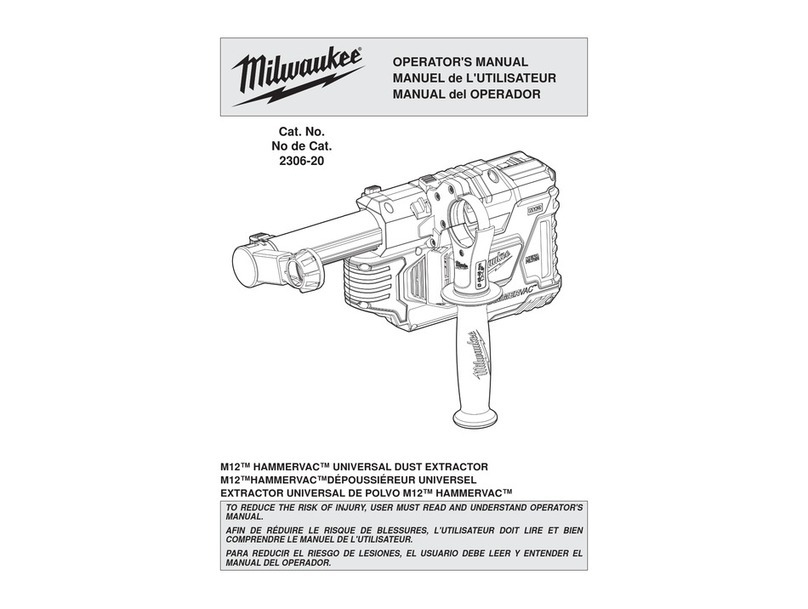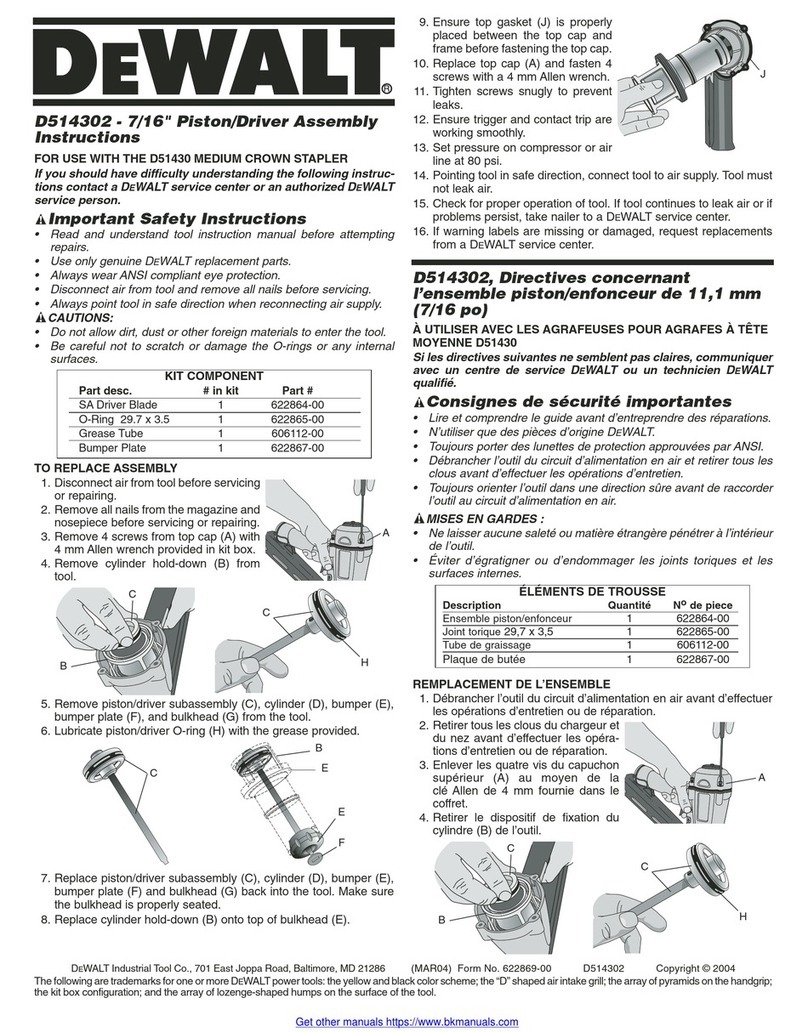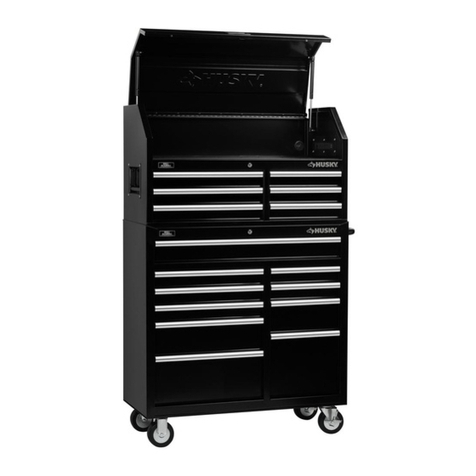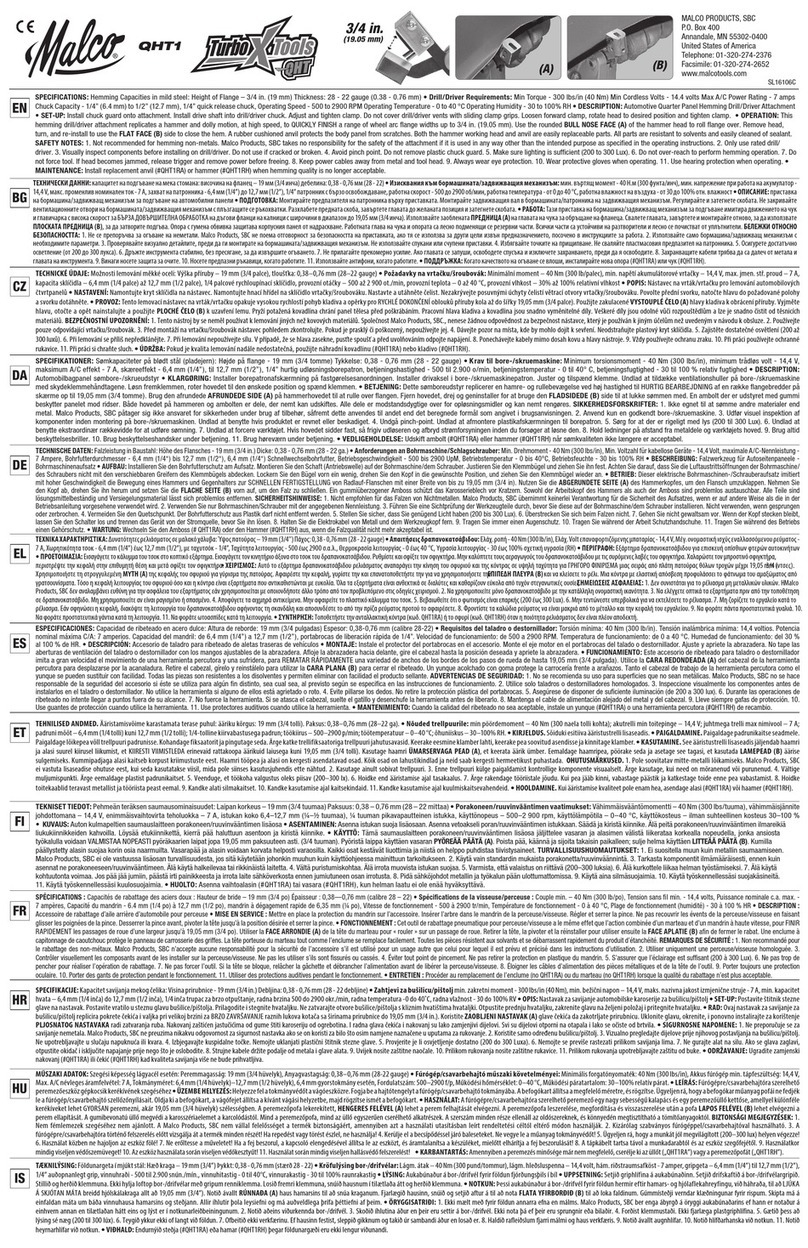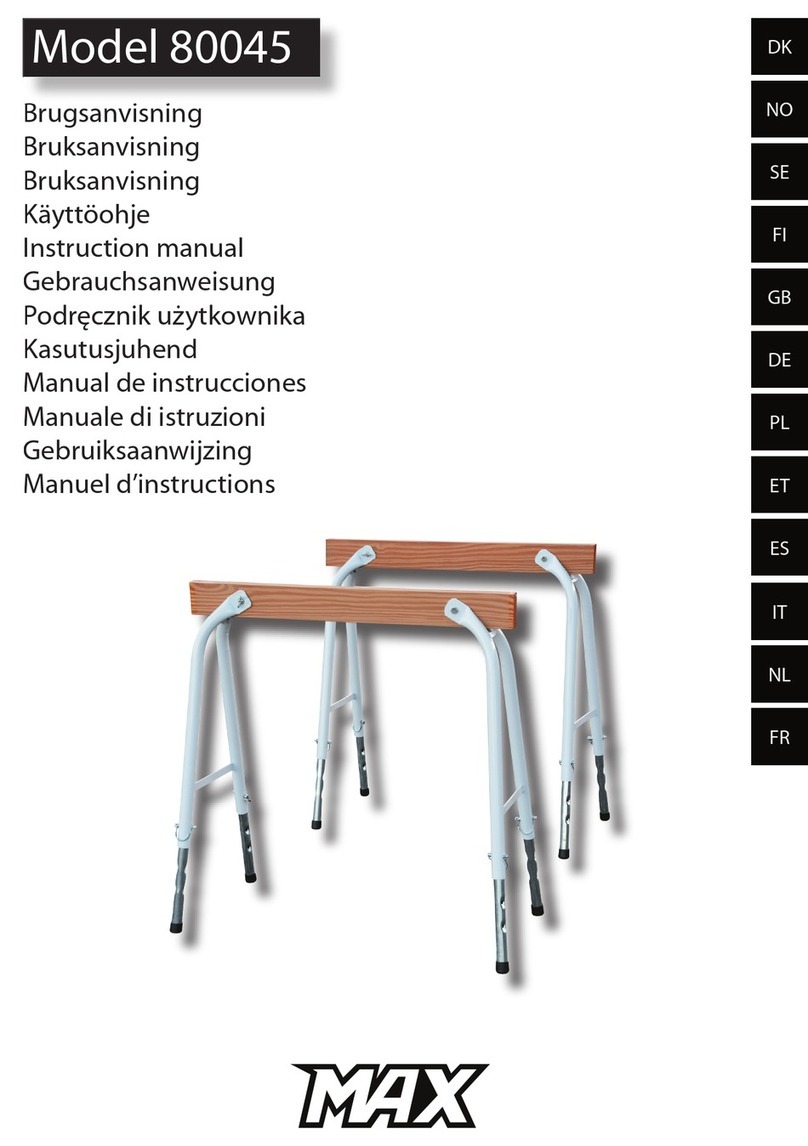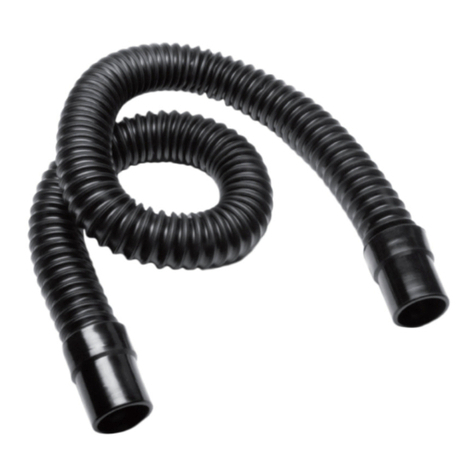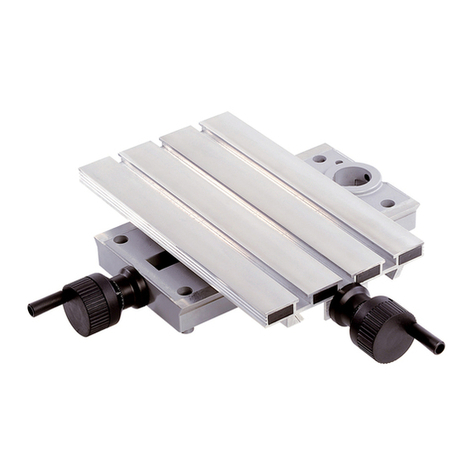Sherline Products 1010 User manual

WEAR YOUR
FORESIGHT IS BETTER
THAN NO SIGHT
READ INSTRUCTIONS
BEFORE OPERATING
SAFETY GLASSES
SHERLINE PRODUCTS INC. •3235 Executive Ridge •Vista•California 92081-8527 •FAX: (760) 727-7857
Toll Free Order Line: (800) 541-0735 •International/Local/Tech. Assistance: (760) 727-5857 •Internet: www.sherline.com
9/18/15
Chuck and Drill Sizes
The size of the chuck indicates the largest size drill shank it
will hold. Larger chucks will hold larger drills, but they are
also longer and eat up more of the space you have between
centers on your lathe. Not only is a larger chuck longer, but
the drill bits also get longer as they get larger. On the mill
or on the Model 4400/4410 long bed lathe this is usually
not a problem, but on the Model 4000/4100 lathe, unless
you need to hold a large diameter drill, you will probably
want to use the 1/4" or 5/32" drill chucks because of their
shorter overall length.
The 5/32” 0JT* chuck is offered in two versions. P/N 1010
is tted with a #1 Morse arbor to be used in the headstock
for drilling on the mill or lathe. Included with this chuck
is a drawbolt and washer. P/N 1015 is tted with a #0
Morse arbor for use in the tailstock. The 1/4" (P/N 1072)
and 3/8" (P/N 1069) chucks come with both a #0 and #1
Morse arbor which can be interchanged so the chucks can
be used in either the headstock or tailstock. The 1/4" and
3/8" chucks will hold drills as small as 3/32". For using
smaller drills down to 1/32" or even smaller the 5/32" chuck
is recommended.
* The designation “0JT” stands for “Zero Jacobs Taper”.
The chucks come with a zero Jacobs tapered hole in the
back. Sherline installs an arbor to t either the #1 Morse
or #0 Morse tapers in the headstock and tailstock. These
arbors are pressed into the zero Jacobs taper which is why
they are not as easily interchangeable as are the arbors for
the 1/4" and 3/8" chucks which thread onto the back of
the chucks.
Purpose of the Tailstock Chuck
The tailstock chuck is one of the most important accessories
you will need for your lathe. It will enable you to accurately
drill, ream or tap any part mounted in the lathe. The part to
be machined is chuck or collet mounted in the headstock.
The tool is held in the tailstock chuck and fed into the part
using the tailstock ram feed. Parts that are going to be
mounted between centers can be center drilled this way.
Other parts requiring a hole accurately drilled on center
such as a shaft, pulley sheave or gear blank will also be
done this way.
Sherline Drill Chucks
P/N 1010/1015 (5/32"), 1072/3072 (1/4") and 1069/3073 (3/8")
FIGURE 1—Center drilling with a tailstock chuck. The
work turns while the drill is stationary.
FIGURE 2—Center drilling a long workpiece held in a
steady rest
These chucks can also be mounted in the headstock of the
lathe. The Sherline 1/4" tailstock chuck (P/N 1072) is a
precision 1/32" (0.8 mm) to 1/4" (6.4 mm) 3-jaw chuck

complete with key and two arbors. P/N 1069 is a 1/32"
to 3/8" (9.5 mm) chuck with key and two arbors. A #0
Morse arbor ts the tailstock and a #1 Morse arbor ts
the headstock. The #1 Morse arbor for the headstock is
drilled and tapped for a drawbolt to pull it tightly into the
headstock. The drawbolt is also included.
Use of the Tailstock Chuck
When using the chuck to drill a part in a lathe, you must use
center drills to start the hole. Because of the added rigidity
of a center drill, it will nd and hold the center while a more
exible twist drill will “walk” or follow the part around
rather than center itself. Once a center is established with a
center drill, a twist drill, even if not perfectly aligned, will
center itself in the hole and continue to drill on that center.
(Be sure to use a cutting lubricant when using the center
drill and “clear” the tip often by backing it out of the part
so that the tip doesn’t break off in the hole.)
One additional caution...Do not use the tailstock chuck and
a twist drill to attempt to align the headstock and tailstock.
It is almost impossible to visually nd a center using a drill
point. The utes cut into the drill make the center look
different depending on the angle from which you view it.
For accuracy, use an arbor or “dead center” in the tailstock
when aligning the machine. At very least, use a center drill
in the chuck rather than a twist drill. Keep in mind also that
the runout of this type of chuck can be as much as .003".
The most accurate alignment is achieved using dead centers
in both the headstock and tailstock.
Headstock Drilling
When using the drill in the lathe headstock, the work is
mounted to the table and the drill turns. To allow the work
to be moved up and down, it can be mounted to a vertical
milling table P/N 1185 which is designed to be mounted
to the lathe crosslide. The drill is more commonly used in
the headstock when using it in the milling conguration
either with a mill or on a lathe tted with the vertical milling
column attachment.
FIGURE 3—Headstock drilling—The drill turns while the
work is held stationary.
Installing a Chuck in a taper
Before installing the chuck in either the headstock or
tailstock, make sure the male and female tapers are clean
and free of chips. A drawbolt is used to pull the headstock
chuck tightly into its #1 Morse taper. On the tailstock, insert
the #0 Morse taper into the tailstock and push it until it seats,
twisting it slightly back and forth to make sure you get good
contact with the taper. If it won’t seat fully, it may be hitting
the end of the tailstock leadscrew. Using the handwheel,
extend the spindle ram sufciently so the tapered arbor
can seat. No drawbolt is used on the tailstock. The friction
of the shallow Morse taper should be enough to keep the
chuck from turning when it is properly seated.
Removing a Drill Chuck from its taper
HEADSTOCK—Becausethe forceson thechuck aregreater
when it is used in the headstock, a drawbolt is included
to draw it tightly into the #1 Morse taper to keep it from
slipping. To remove it, back off the drawbolt a few turns
and tap on the head of the bolt with a hammer to free up
the chuck. Start lightly and tap a little harder each time
until the chuck breaks loose.
TAILSTOCK—The tailstock chuck is pushed into the #0
Morse taper in the tailstock with a press t and is easy
to remove. Simply turn the tailstock handwheel counter-
clockwise to bring tailstock ram in past the “zero” point.
The end of the leadscrew inside will contact the back of
the arbor to push the chuck out of the taper.
Joe Martin
President and Owner
Drill Chuck Parts List—All Models
REF. NO. PART NO. DESCRIPTION
1 10190 5/32" Drill chuck body
1 11900 1/4" Drill chuck body
1 11800 3/8" Drill chuck body
2 10170 5/32" chuck arbor, #0J taper to #1M taper
2 11880 Threaded #1M arbor for 1/4" or 3/8" drill chucks
3 30880 1/4-20 x 5" Drawbolt and centering washer
4 10160 5/32" chuck arbor, #0J taper to #0M taper
4 11890 Threaded #0M arbor for 1/4" or 3/8" drill chucks
5 10180 Chuck key, 3/32" drill chuck
5 11806 Chuck key, 1/4" drill chuck
5 11810 Chuck key, 3/8" drill chuck
Drill Chucks, Page 2 of 2 9/18/15
This manual suits for next models
5
Other Sherline Products Power Tools Accessories manuals
Popular Power Tools Accessories manuals by other brands
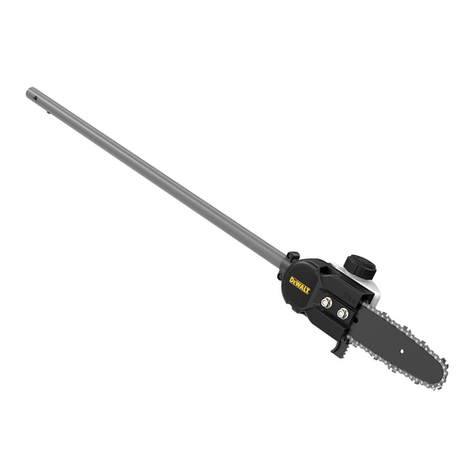
DeWalt
DeWalt DWOAS6PS instruction manual

King Industrial
King Industrial nova 8338063 instruction manual
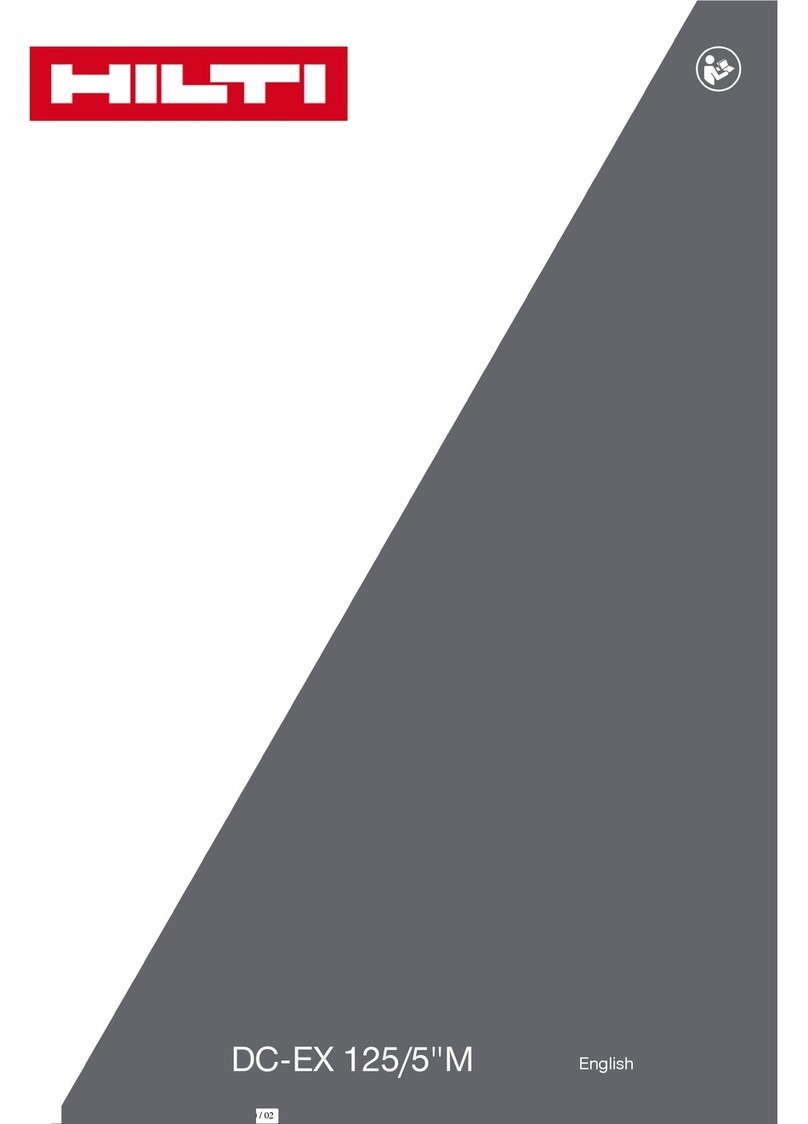
Hilti
Hilti DC-EX 125/5inch M operating instructions

SNAP DRILL
SNAP DRILL SD42,4 Technical specifications
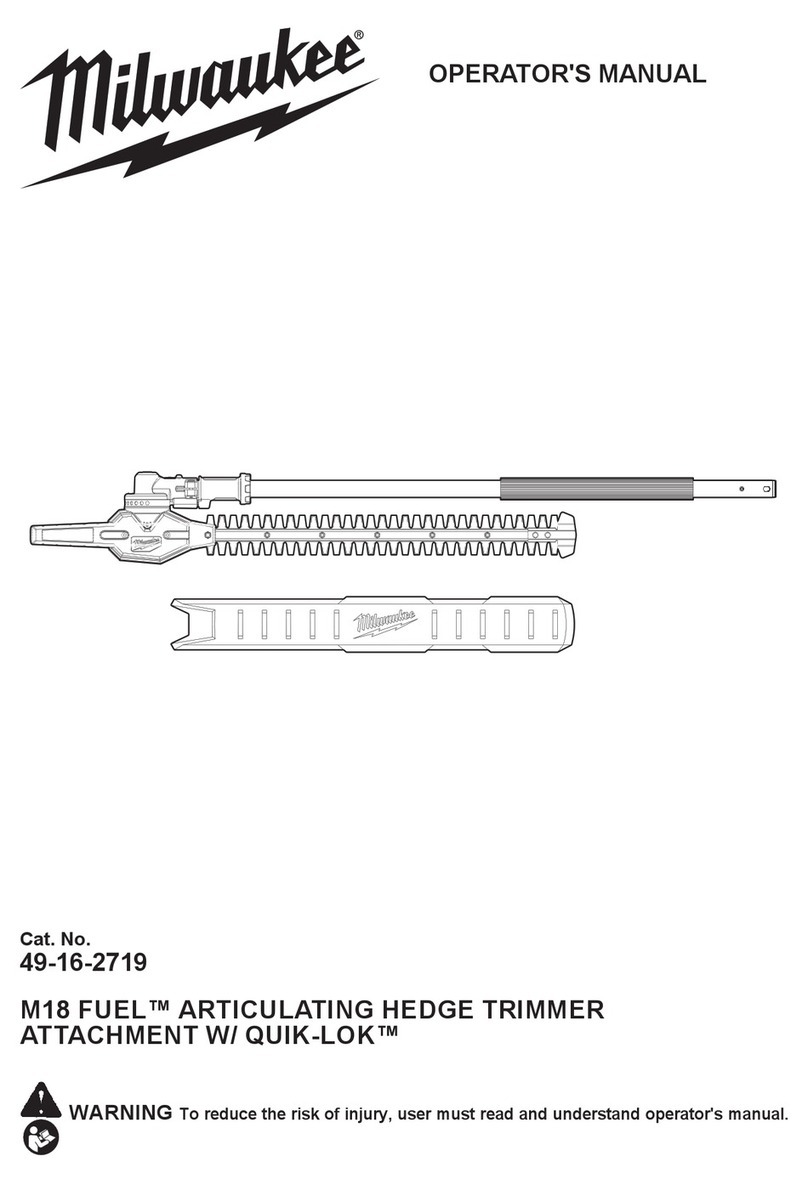
Milwaukee
Milwaukee M18 FUEL QUIK-LOK 49-16-2719 Operator's manual
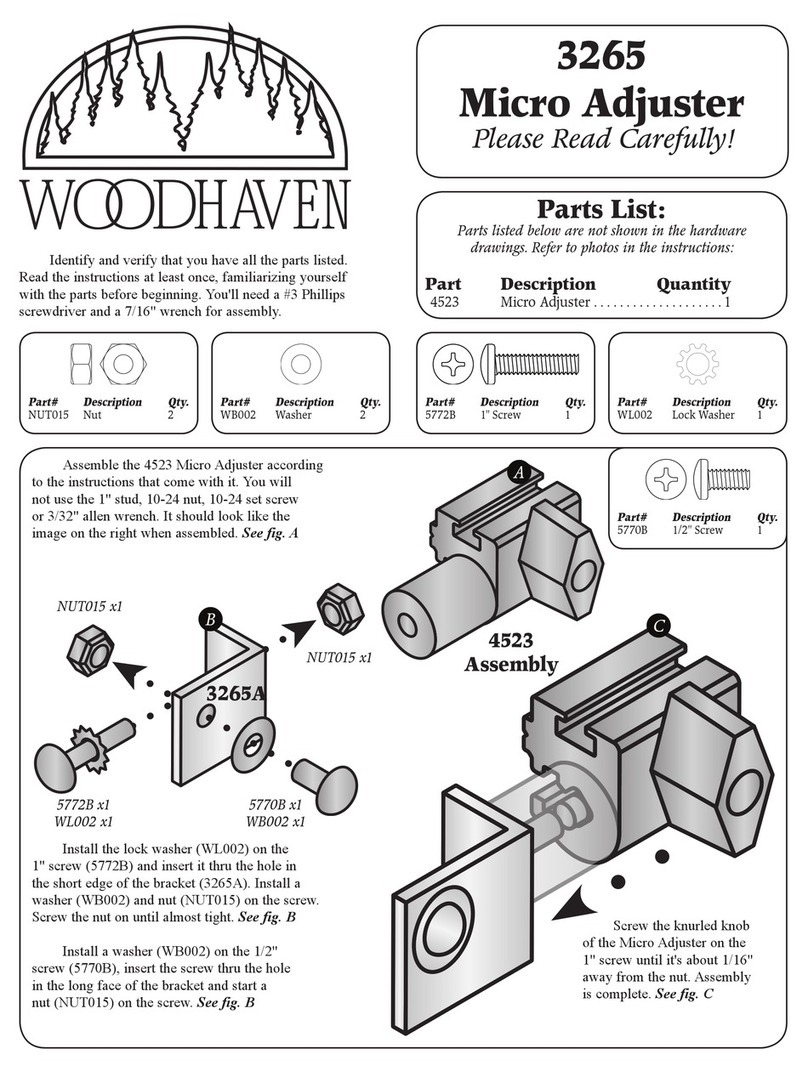
Woodhaven
Woodhaven Micro Adjuster 3265 Assembly instructions



